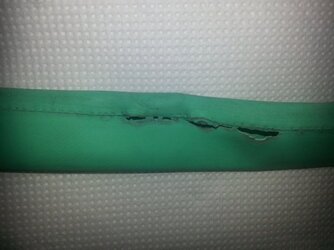Profpointy
Legendary Member
Laws of physics:
increase temperature by 10% , the pressure must also increase by 10% (let's say constant volume)
Bear in mind this is termperature in Kelvin, so from moderate 10C (=283K) to scortching 40C (313k) is sitll only 10% or so. Do you really pump your tyres to within 10% of bursting point?
I guess you could pump them up really hard in your trip to the North Pole, then fly straight to Africa and get a really fat bloke to sit on the bike over a big bump and you might have problems ,...
increase temperature by 10% , the pressure must also increase by 10% (let's say constant volume)
Bear in mind this is termperature in Kelvin, so from moderate 10C (=283K) to scortching 40C (313k) is sitll only 10% or so. Do you really pump your tyres to within 10% of bursting point?
I guess you could pump them up really hard in your trip to the North Pole, then fly straight to Africa and get a really fat bloke to sit on the bike over a big bump and you might have problems ,...



